ON Semiconductor recently acquired Fairchild Semiconductor, which brings customers 50 years of experience in the automotive industry. It is the world's second largest non-microcontroller automotive semiconductor supplier, offering a comprehensive solution for automating and electronic functions of automotive functions. Sensors are especially critical as the car moves toward intelligence. Under this trend, ON Semiconductor introduced the world's first passive, intelligent sensor without additional microcontroller control, based on the RFID protocol, single-chip integrated energy transceiver function, can detect temperature, humidity, pressure and distance, and create sensor applications. New pattern.
This article refers to the address: http://
Functional modules and working principle of intelligent passive sensors
The intelligent passive sensor includes three functional modules: an antenna module, a sensor module based on Magnus IC, a power supply, a single chip microcomputer, and a processing module, as shown in FIG. The antenna module communicates wirelessly based on the UHF Industry Standard Second Edition protocol and collects energy for use by the internal processing unit. The power supply, single-chip microcomputer, and processing module are compatible with RFID ecosystem components, and can be read by a standard RFID reader. Based on the sensor module of Magus IC (the industry's first passive RFID sensor chip), the adjustable front-end auto-tuning module detects environmental conditions such as humidity or pressure through internal circuit sensing impedance changes. Each smart sensor has an independent temperature. The sensor reads the temperature information, and the chip detects the distance/motion/state by the wireless signal strength. Each smart sensor internally stores a unique ID for identification. The final detection accuracy depends on the oversampling frequency in the UHF RFID operating frequency range.
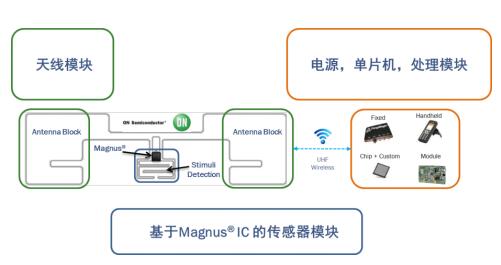
Figure 1: Functional Block Diagram of Smart Passive Sensors
The intelligent passive sensor is based on the RFID protocol and has a transmission frequency range of 860 to 960 MHz. First, the RFID reader sends a read command while charging the RFID sensor. When the RFID chip is charged, it starts to work, reads the relevant sensor information, and feeds back to the RFID reader through the antenna.
Advantages of intelligent passive sensors
Compared with existing sensors, intelligent passive sensors have many advantages: existing sensors need to place detection sensors, power supplies, control and communication chips, single-chip microcomputers, etc. on each PCB, so the size is large, the cost is high, and maintenance is required; Each node of the passive sensor is a passively discovered smart tag power supply. The microcontroller and data processing are placed on separate readers. No battery is required, the size is small, and it is as thin as tape. Each reader can support multiple tags, so the cost Low, no maintenance required.
Although the UHF RFID-assisted electronic tag is also a passive tag, the node does not need a battery, and the unique ID is realized by the TID code and the electronic tag code (EPC), but the surface reflection of the working adsorbent material reduces the effective reading distance and has no sensor function; The passive sensor has no surface reflection of the working adsorbent material, thereby upgrading the effective reading distance and integrating sensor functions such as humidity, pressure, distance and temperature detection.
Intelligent passive sensor application example
An intelligent passive sensor reader can read thousands of sensor information, so only one reader in the car with multiple antennas can meet many sensing needs, such as liquid level detection, tire pressure monitoring (TPMS) , temperature detection, seat detection, wiper, indoor air and headlamp humidity / leakage detection.

Figure 2: A reader meets the needs of unlimited in-vehicle sensor applications
Seat detection
Seat detection is a system that uses sensors to secure occupants. The commonly used seat detection system is judged based on weight or pressure. Any object such as a bag of groceries will also trigger a seat belt warning, and the false positive rate is relatively high.
In the new intelligent passive sensor solution from ON Semiconductor, the wireless sensor tag is embedded in the seat (the humidity sensor tag is embedded in the seat back and the pressure sensor tag is embedded in the seat cushion). The humidity label can determine whether there is someone on the seat through the human body detection element, eliminate the trouble of the item triggering the seat belt warning, and improve the reliability; the pressure label determines the size of the passenger through the weight detection, and can feedback the occupant sitting posture to the intelligent airbag control unit. Enhance safety by optimizing the angle of airbag release. The program can detect the number of seats remaining in the car, can be extended to the detection of the rear seat and child safety seat, and multiple seats share a control unit (reader) for control, embedded passive humidity sensor does not need any Harness and connector.
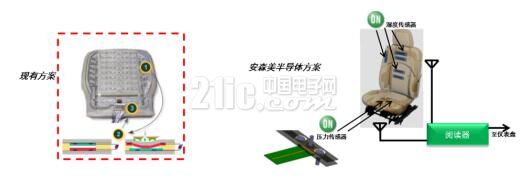
Figure 3: Traditional seat detection scheme (left) vs. intelligent passive solution (right)
2. Liquid level detection
The vehicle level detection includes the detection of fuel tank oil quantity, oil level, brake fluid level and acid liquid level. Current automotive liquid level detection systems on the market require wires to be connected to the interior of the sink.
And ON Semiconductor's intelligent passive sensor can make the sink without any lead and electrical problems: liquid level detection using the dielectric constant of the fluid, can detect a variety of liquids including water, gas, gasoline, engine oil, solvent acid, etc. The fitted humidity sensor is placed outside the sink. The sensor tag can be up to 4 inches long. Multiple tags can be used for long distance measurement. Accurate measurement can be achieved by detecting the communication pipe. The two sensors are installed at the upper and lower ends respectively. The change in dielectric constant is detected (eg, a gas mixture).
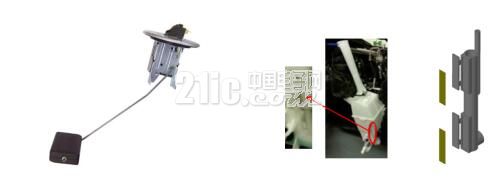
Figure 4: Current solution for the liquid level detection market (left) vs. Intelligent passive sensor solution (right)
3. Rain sensor - automatic wiper start control
The wiper control system currently used in automobiles is based on sunlight refraction and is susceptible to interference and triggers malfunction. The innovative intelligent passive sensor uses humidity detection to cover a wider area of ​​the windshield. Multiple humidity sensor labels can be attached to different positions on the windshield to detect high dielectric constant water on the windshield. The number of sensors on the windshield can be determined by calibration, and the light perception can be detected by different sensors. The next generation of products can be mounted inside the glass for installation, using a sensor engine between the two feet to detect the change in electrical impedance, enabling intelligent wiper control with only one sensor.

Figure 5: Smart Wiper
4. Regional wireless temperature monitoring
When used for regional wireless temperature monitoring, existing temperature sensors are leaded, active, and the mounting location is limited. The innovative intelligent passive sensor can be used for wireless temperature monitoring in multiple areas. The unique RFID identification code supports automatic identification. The reader is connected to the interior gateway. The automatic air conditioning system can read data in real time for automatic high-precision control. Built-in- The measurement range is 40 °C to +85 °C (+/- 1 °C accuracy), and the next generation will support temperatures above 125 °C.
5. Tire pressure monitoring system
The tire pressure monitoring system is used to automatically monitor the tire pressure during driving, and timely alarm when there is a danger sign of insufficient or excessive tire pressure, improve driving safety and fuel economy, extend tire usage time and reduce wear of the suspension system. . Multi-chip sensors currently used in the market for tire pressure monitoring systems are installed on each rim and stem, are battery powered, consume more than 250 uW, and require an accelerometer to prevent the battery from running out when the tire is not moving. Reprogramming to position during tire rotation, costing more than $30.
And ON Semiconductor's smart passive sensor is a single-chip solution that eliminates the need for batteries and accelerometers. A single sensor module consumes less than 15 uW, so tire pressure and temperature information can be detected whether the tire is rotating or stationary. Smart passive sensor tags are placed on each tire, and the unique RFID identification code supports automatic tire positioning, and the software does not need to be reprogrammed.
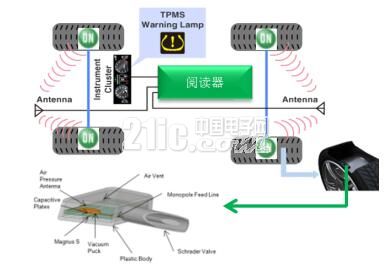
Figure 6: Smart Passive Sensor for Tire Pressure Monitoring System
6. Vehicle offline leak detection
The depot will test the high-pressure water immersion test before the car leaves the factory: After closing the door and window of the car, the car is sprayed with water from different angles to test the sealing performance of the car and whether the chassis is seeping water. Most of the current solutions on the market use manual detection, which takes a long time and is prone to error. Once the leak is detected, the car must be disassembled to the chassis for repair.
When ON Semiconductor's smart passive sensors are used in such applications, a typical configuration consists of six to ten sensors, each location is assigned a unique EPC, placed in a specific test depending on the size of the vehicle and the specific needs of the OEM. The location or the confluence point of the water flow detection, the factory workers only need to hold the reader around the car to query the sensor tag, no need to manually detect.
Compliance, safety and EMI performance
ON Semiconductor has tested the CISPR-25 Class 3 for different occasions/configuration readers, antennas and nine sensor tags, passed the external zone transmission test, and the maximum transmit power in the RF transmission frequency range of 860 to 960 MHz is 33 dBm (approximately 2 W), complying with FCC Part 15 and FCC 47CFR2:0ET (<1 W), EMC complies with CISPR-25 Class 3 specification, and RFID regional bands do not cross-interfere with other frequency bands.
Since the smart passive sensor itself has no internal energy, it is transmitted through RF reflection, so there is no safety concern. As for the reader, because it works in the UHF RFID frequency band 860-960MHz, in line with the international agreement ISO/IEC 18000-6C standard, this frequency band is at the low end of the electromagnetic spectrum, which is less harmful than the radiation of the car audio, and the maximum output power of the system. 2 W (33 dbM) is as large as a cell phone, so there are no safety and health risks.
Orderable products and kits
Currently, ON Semiconductor offers the following models of intelligent passive sensor samples, reader reference designs based on AMS RFID IC + 8-bit microcontroller + CAN transceiver, 3 to 6 dBi UHF receive antenna reference design, and efficient system read Distance simulation models, antenna placement optimization tips, open source sample code, and basic/advanced feature development kits.
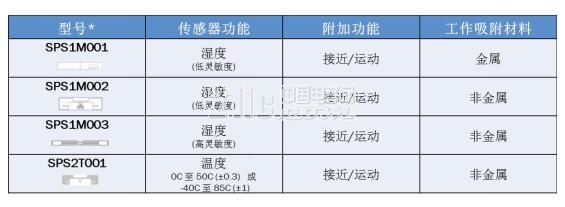
Table 1: Orderable Smart Passive Sensors
Conclusion
As the world's second-largest non-microcontroller automotive semiconductor supplier, with 50 years of experience in automotive semiconductors, ON Semiconductor continues to promote energy-efficient innovation in the automotive sector. The company's recently launched smart passive sensor is the world's first passive. Intelligent sensors that do not require additional microcontroller control, single-chip, sensorless sensing to enhance the level of automotive intelligence, passive wireless features reduce the wiring harness inside the car. The chip integrates a dedicated data processing core and sensors for temperature, humidity, pressure, and distance. It requires no battery, ultra-thin, ultra-small size, and low cost, making it suitable for difficult-to-contact locations, space-constrained applications, and more needs. For the sensor function, such as seat detection, liquid level detection, wiper, tire pressure monitoring, vehicle leakage detection, etc., its flexible installation position and customizable size and function design help the development of smart cars.

Pay attention to ON Semiconductor's official WeChat to learn more innovative and energy-efficient solutions
Non-slip Heat Shrink Tubing, also known as anti-slip Heat Shrink tubing, is a specialized type of tubing designed to provide enhanced grip and insulation for various applications. It is typically made from a flexible polymer material, such as polyolefin, that shrinks when heat is applied, conforming tightly to the underlying surface.
Non-slip heat shrink tubing is a versatile and valuable solution for applications where enhanced grip, electrical insulation, and protection are needed. Its unique properties make it a valuable asset in various industries and for a wide range of equipment and tools.
No-slip Heat Shrink Tube,Pe Heat Shrink Film Tubing,Dual Wall Adhesive Heat Shrink Tubes
Dongguan Liansi Electronics Co.,Ltd , https://www.liansielectronics.com